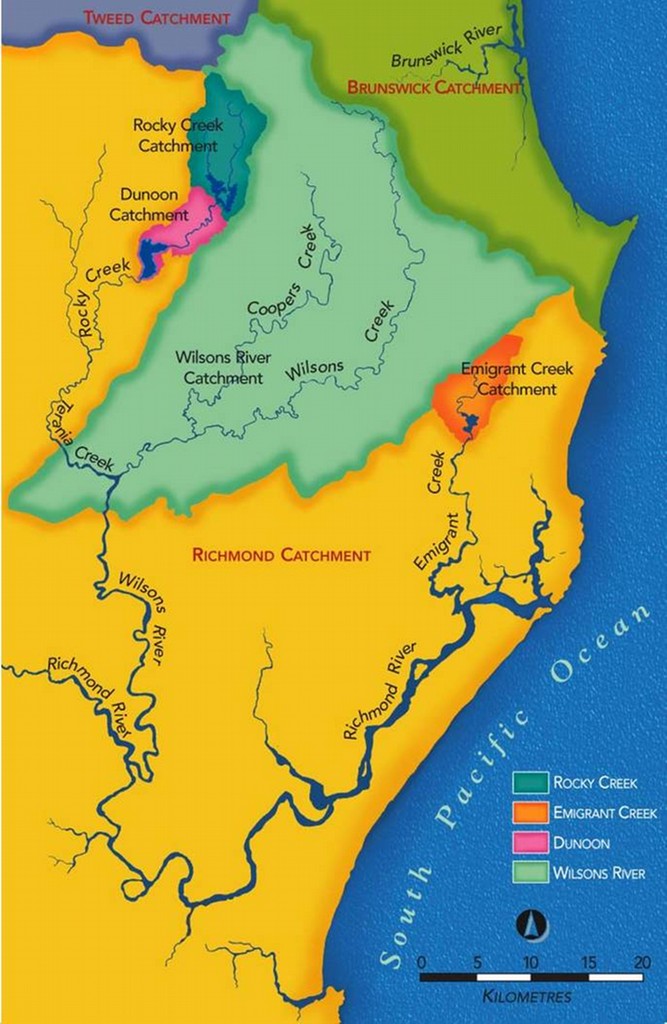
Home » The region's water supply » Healthy catchments » Where our water comes from
In This Section
Where our water comes from
The water that Rous County Council supplies to our community comes from different catchment areas in the region. Catchments are areas of land that feed water to a particular creek, river or other water body.
As a part of the water cycle, rain falls from the sky and flows through these catchments and into the creeks, rivers and dams that are our water sources. We are all part of this water cycle and what we do in these drinking water catchments affects the quality of our drinking water.
Location
The following map shows the location of our three drinking water catchments areas, all in the Big Scrub region of Northern NSW between Lismore, Ballina and Byron Bay:

Geology: What's beneath the surface?
All three catchments contain volcanic 'kraznozem' soils and 'basalt' rocks, mixed with older layers of sedimentary rocks (especially slate). The basalt was laid down by sequences of lava flows 20 million years ago from a huge ancient volcano, of which Mt Warning (Wollumbin) is its remaining core. Rainwater flows across these soils as 'run-off' into the creeks. It also filters down through the soils and broken rock layers into the groundwater that feeds the creeks and the dam. This water picks up minerals from the volcanic geology, producing water with high levels of iron and manganese.
Climate: What's the weather like?
This region has a humid subtropical climate with mild winters and hot summers. The Northern Rivers has a high level of rainfall; average rainfall each year is over 180 centimetres compared to an Australia wide average of only 60cm¹. This high rainfall means that a relatively small catchment area can catch a lot of water.
The months between January and May are the wettest while September and October are the driest. This means that more water is collected in late summer and autumn than in the rest of the year. 'Crunch time' for water collection and for the health of aquatic ecosystems occurs in spring.
¹ Source: Australian Bureau of Statistics
Our catchments
For more information, read more about the three main drinking water catchments in this region, or download more information here: